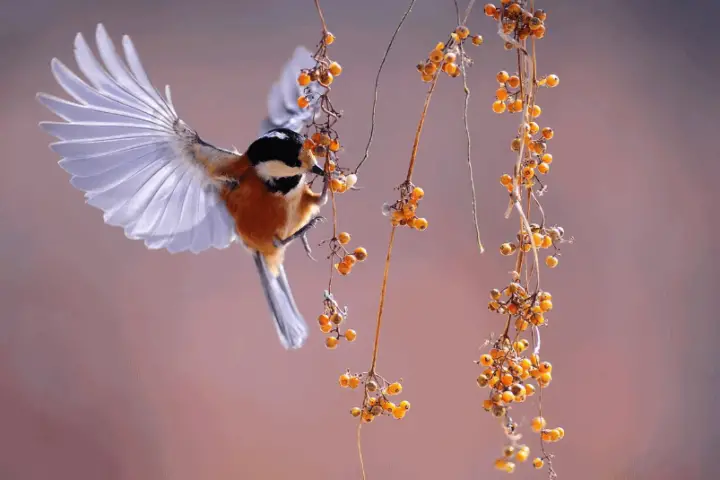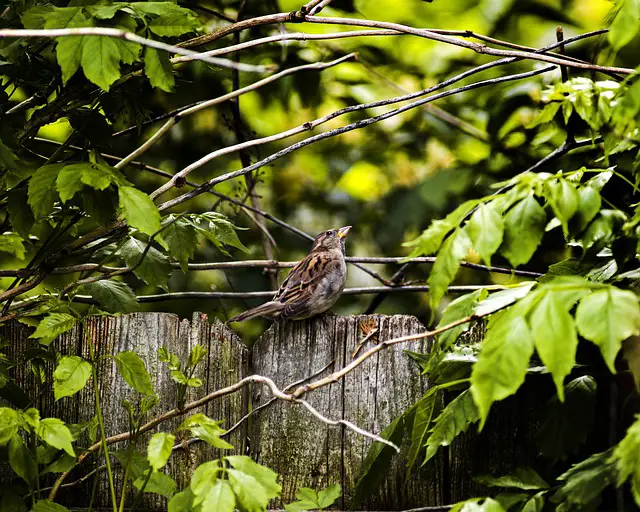The European robin or Eurasian robin (Erithacus rubecula) is a small bird that relies on insects for consumption. The bird is also known as robin redbreast. There seems to be no real difference between male and female. Robin birds are one of the Britain’s loved birds that are known for their sweet songs. In the northwestern Europe, robins are quite abundant in the public parks.
Robin Redbreast Facts
Anatomy
- Robin redbreast reaches a length of about 12.5–14.0 cm (5.0–5.5 in) with the wingspan measuring up to 20–22 cm (8–9 in).
- The average weight of robins is 16 – 22 grams.
- Unlike juveniles, adult birds show orange breast and face while the sides of the neck are recognized by bluish grey color.
- Robins have rounded wings which are adapted to fly in narrow spaces including dense undergrowth.
- They have got large eyes with the help of which robins can visualize in poor light.
- Young robins are recognized by the dull-brown plumage with no red breast.
Distribution
- The robin redbreast is thought to occur in Eurasia, Western Siberia, Atlantic Islands, Algeria, to as far as Madeira and Azores. In Iceland they are nomadic. Robins all spread all across the mainland Europe and in some parts of North Africa.
- They are absent from Shetland.
- Robins of Britain stay in Britain all year round except for small group of females that migrates to southern Europe in winter. Some may even spend winter in Spain.
- During winter robins leave Russia and Scandinavia for Western Europe and Britain. Russian robins cannot survive the extreme temperatures and thus migration becomes inevitable.
- Robin redbreasts have been introduced in New Zealand and Australia.

Habitat
- Eurasian robins are likely to make homes in a wide variety of habitats such as woodlands, wooded roadsides, graveyards, and deciduous forests.
- Gardens and public parks also attract many robins not only for food but also in making habitats. Robins also need some covering to protect nests and as such they prefer shrubs and trees for roosting.
- Robins of the south and north are thought to choose coniferous forests particularly those that have mossy floor to make habitats. They rarely make homes in reedbeds except for in winter.
Behavior
- Eurasian robins are nearly all diurnal as they remain active all day. However in a full-moon night or in street lights they are very keen to hunt insects.
- Since robins take out unwanted insects from the ground, gardeners consider them as a supreme helper.
- Males are extremely territorial as they are primarily known for their aggressive behavior. If a bird enters the territory male robins will actively defined it and may injure the intruder.
- The average lifespan of Eurasian robins is just over 1 year. However studies show that if the bird reaches 5 or 6 years it is expected to live much longer than this. The maximum lifespan ever recorded of robin is 19 years in captivity.
- One of the sweetest birds, robin redbreast produces a warbling or fluting sort of sounds. These sounds are not meaningless they are meant to claim territory. The winter songs are much sweeter than the summer songs.
- In cities where artificial lights are available, Eurasian robins sing many hours during night. However in the breeding season, they may stop singing minutes after sunset.
- The feeding begins before sunrise and goes on even after dusk.
- While perching, robin birds often flick tails—a behavior that shows aggression towards other animals.
- While female robins leave the territory in summer to move to a nearby nesting site, males claim the territory all year round.

Feeding Ecology & Diet
- European robins seem to rely on ground dwelling insects such as beetles, worms, and earwigs. Prominent among insects is an earthworm that makes up much of the robin’s diet.
- They also eat many terrestrial invertebrates and it includes spiders and worms. Robins supplement their diet with some berries and fruits.
- Robins often follow large mammals such as wild boar or deer because as mammals walk they disturb the insects on the grass and these insects are captured by robins.
Reproductive Biology
- In cities, robins often build nests in buildings or seek any shelter or hole that suits their nesting. They are known to occupy bicycle handlebars, sheltered banks, discarded kettles, crevices, watering cans, and small machine pieces for their nesting.
- Robin redbreast’s breeding season ranges from March to July.
- A female begins searching for male in the late December. Thus in winter it leaves the territory to find a mate. In December most other birds go silent but robin’s song becomes the song of the entire forest. It goes louder and louder until a female finds a male. Male robin may react rather angrily towards loud singing of a female but he accepts her immediately after that.
- During the breeding season, male and female are often found chasing after one another while singing at the same time. This goes on for about 90 – 120 days till the time of nesting.
- A female robin builds the entire nest alone and incubates the chicks. Male on the other hand bring her food. When the young leaves the nest, mother lays another clutch of eggs. This time male will guard the eggs.
- European robins make nests with grass, leaves and moss. It is further lined with some hair or feathers.
- They attain the maturity at 1 year age.
- A female lays 5 – 6 creamy-colored eggs. There are some reddish-brown spots on the robin’s eggs. The breeding season begins in March in Ireland and Britain.
- The incubation period lasts about 12 – 15 days.
- Young birds fledge out in 10 – 18 days.





